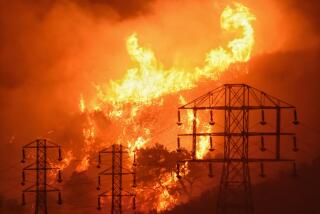State Energy Commission OKs plan to deal with growing power demand
- Share via
SACRAMENTO — Facing growing demands for electricity in the years ahead, state officials declared that making buildings, appliances, lighting and electronics more efficient should be a priority.
Close behind, they said, is putting tighter controls on power demands on hot summer evenings when air conditioners are blasting.
Those were the state’s top two priorities that were unanimously approved Wednesday by the California Energy Commission as part of the state’s new Integrated Energy Policy Report.
The findings are particularly important given current strains on existing power supplies in the Southern California. Last June, the San Onofre Nuclear Generating Station near San Clemente was shut down. And the expected closing of environmentally damaging coastal power plants, cooled with seawater, is also expected to cause supply challenges ahead.
The state’s plan is revised every two years, drawn up in coordination with the California Public Utilities Commission and the state’s electric grid operator. It is considered a road map for keeping the lights on in California without sacrificing environmental quality or setting back efforts to curb climate change or hurting the economy.
The energy planners hope that utilities will make greater use of techniques such as using radio signals to cycle down air conditioners when temperatures are high. Also favored is time-of-day pricing — charging more when electricity demand is the highest. The goal of this is to encourage homeowners to wash clothes or run swimming pool pumps during off-peak-demand hours, when there’s less stress on the transmission grid supplying power.
The statewide plan calls for a mix of solar, wind and other renewable sources, along with conventional power sources. Those include natural-gas-fired plants and electricity generated out of state and delivered along the interstate power grid.
“The only way we can maintain a reliable power system in Southern California with minimal economic and environmental costs is with a balanced portfolio of preferred and conventional sources,” Energy Commission Chair Robert B. Weisenmiller said.
Twitter: @MarcLifsher
More to Read
Inside the business of entertainment
The Wide Shot brings you news, analysis and insights on everything from streaming wars to production — and what it all means for the future.
You may occasionally receive promotional content from the Los Angeles Times.











